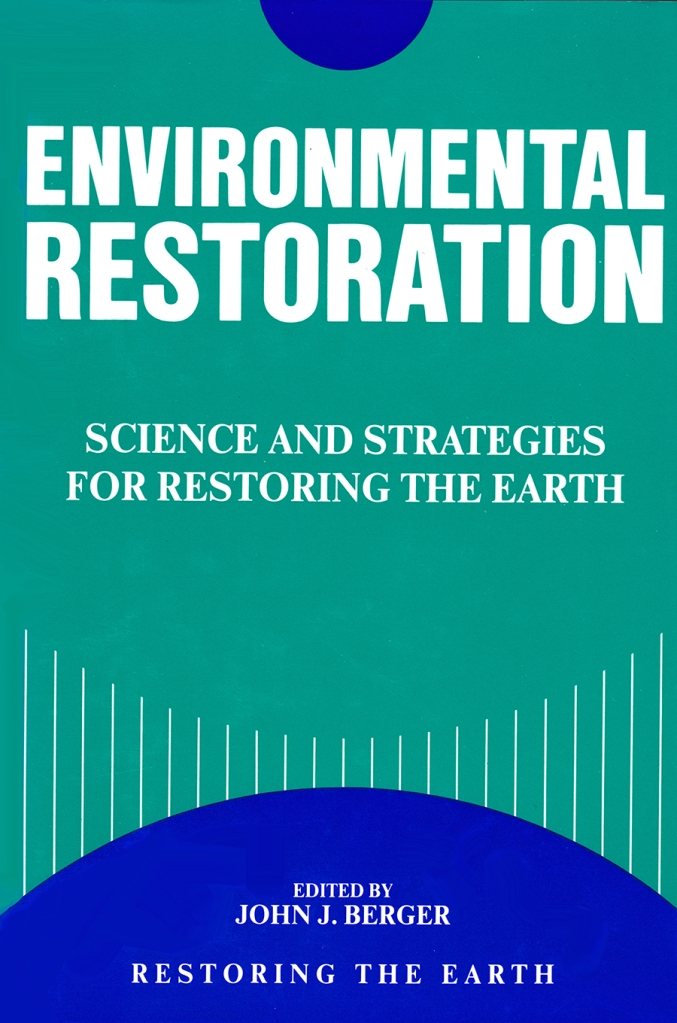Science and Strategies for Restoring the Earth (1990)
 Environmental Restoration is the result of the ground-breaking Restoring the Earth conference held in 1988 at the University of California at Berkeley. It includes contributions on terrestrial restoration, aquatic restoration, environmental law, and planning, land acquisition, and conflict resolution by the foremost experts in the field. Together they represent a major source of information about the direction of research in environmental restoration, and the alternatives this science offers. Included is the most current thinking on techniques and processes of restoration, and many examples of the complex and subtle biological interactions that must be understood for restoration to succeed. The authors vividly document the need for and feasibility of restoring a wide variety of natural resources, from deserts and barrens to wetlands from forests and mined land to lakes and streams.
Environmental Restoration is the result of the ground-breaking Restoring the Earth conference held in 1988 at the University of California at Berkeley. It includes contributions on terrestrial restoration, aquatic restoration, environmental law, and planning, land acquisition, and conflict resolution by the foremost experts in the field. Together they represent a major source of information about the direction of research in environmental restoration, and the alternatives this science offers. Included is the most current thinking on techniques and processes of restoration, and many examples of the complex and subtle biological interactions that must be understood for restoration to succeed. The authors vividly document the need for and feasibility of restoring a wide variety of natural resources, from deserts and barrens to wetlands from forests and mined land to lakes and streams.
Reviews
“Ecological restoration, an interdisciplinary and rapidly growing field, has an urgent need for communication among its many participants. This book, by its very breadth, will make a significant contribution to a better understanding of this crucial new science.”
– Bill Jordan, III Founding Member
Society for Ecological Restoration
Editor, Restoration and Management Notes
“Restoration is an extremely important topic – one that will play a critical role in the future. Until now there has been little opportunity to bring together the full range of knowledge and resources, from all perspectives, of this science in the making. Environmental Restoration is an important step in bringing this about and will be invaluable to everyone who works in the field.”
– Jon Kusler, Executive Director
Association of State Wetland Managers
“Our stewardship of the earth’s environment has been marked by an ever-increasing rate of degradation, parallel to the increase in human activity. Environmental Restoration offers hope for repairing some of the damage we have done. It offers the most current information about restoration work, and is an excellent overview of the subject.”
– David R. Brower
Earth Island Institute